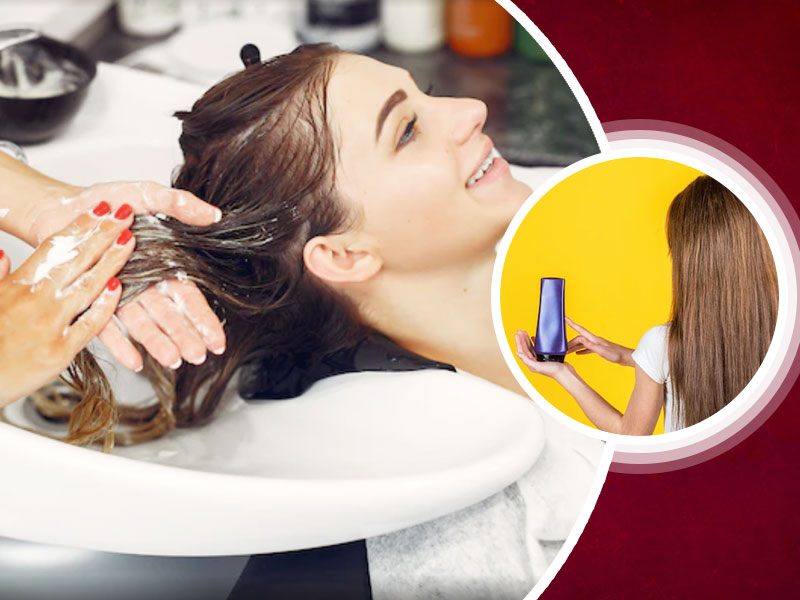
Keeping hair clean is utmost important to maintain hair health. When your scalp and tresses are clean, risk of some major issues including dandruff, hair fall, itchy scalp and infection reduces. Having a hair wash routine helps your tresses get used to it and flourish accordingly. Oiling, shampooing and conditioning are three segments of hair wash that enhances health, texture and shine of hair. But some people do not see any benefit despite following this routine which is heartbreaking for them. In such a case, you can try reverse hair washing. This is a hair washing technique that is found to aid dull, lifeless hair. To know more, read this article till the end.
What is Reverse Hair Washing?
As the name suggests, reverse hair washing is washing your hair in a reverse process or lets us just put it this way, washing your hair from roots to scalp and conditioning first then shampoo. This might sound weird but this process does makes a lot of sense in terms of hair health. In general process, you shampoo your head starting from scalp. With shampoo, sebum(oil produced by the gland) gets washed away leaving your scalp dry. When you apply conditioner after shampoo, the shine may get restored but the dryness remains. When you do reverse washing of hair, you clean tresses to eliminate dirt and dust without eliminating the moisture as you are first conditioning them with a good hair conditioner. So, if your scalp feels extremely dry, rough, scaly and flaky, change the washing process.

Reverse Hair Washing Benefits
Hair washing itself is a very crucial process for hair care but reverse hair washing provides some different benefits. Read some major benefits here:
- Reverse washing of hair helps in cleaning the scalp without drying out scalp or eliminating sebum oil.
- Reverse hair washing improves hair health and promotes hair growth. It allows follicle repair when eventually benefits hair in many ways.
- Since the sebum oil is not eliminated, it keeps the scalp hydrated.
- People who are experiencing dull and loss of shine can see a visible positive result. With hair repair process, you are also supposed to see your hair getting shiner and brighter.
Also Read: DIY Garlic Shampoo: Make Your Anti-Hair Fall Shampoo At Home
Reverse Washing Method
It is very simple to do reverse washing if you know the right steps. Follow this step-by-step guide:

- Start by wetting your hair like you generally do during head wash. Make sure your hair is completely wet before moving ahead to the next step.
- Now, take some conditioner and apply it on the ends first.
- Slowly move upwards covering tresses but avoid scalp.
- Do not wash hair after this step.
- Now, apply shampoo to your hair, going upwards.
- By this slight change in hair wash routine, you can prevent your hair from drying out.
- This would thoroughly clean your hair without making them rough and brittle.
- Reverse hair washing locks moisture and helps your tresses remain healthy and shiny.
Also Read: Make Hair Conditioner At Home Using Coconut Milk, Learn Recipe and Benefits
NOTE: If you have thin hair with split ends issue, you must try reverse washing hair regimen as it helps in repairing hair cells to boost hair health and enhance tecture, shine. This is particularly helpful for people with thick and rough hair. Those having curly hair shall also switch to reverse hair washing to tame their hair. It may take a few weeks to see visible results and continue this method to sustain these changes.
Who Should not Try Reverse Hair Washing?
Reverse washing has its own distinct benefits. But this method is not for all hair types. Shampoos generally have a high pH level and conditioners generally have a low pH balance. Through both of these, a balance can be created in your hair. If you have a lot of tangles and thick hair, then you should not try this method. Because doing this leaves the cuticles of these hair open, which can make your hair more frizzy.
Image credits- freepik
How we keep this article up to date:
We work with experts and keep a close eye on the latest in health and wellness. Whenever there is a new research or helpful information, we update our articles with accurate and useful advice.
Current Version